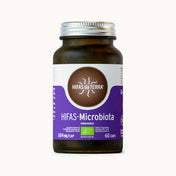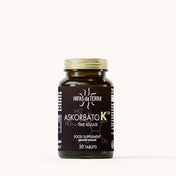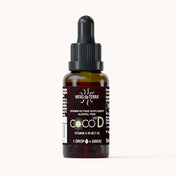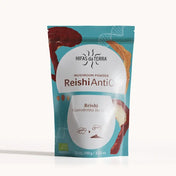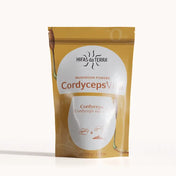What is ADHD
ADHD is also most commonly known as Attention Deficit Hyperactivity Disorder, and it causes unusual activity of hyperactivity and impulsive behaviours. ADHD is prelevant in children and most commonly causes difficulties with executive function skills.
This can affect many skills that are needed in everyday life, like time management, organisation, self-control, patience, managing emotions and staying on task. Children who struggle with ADHD often need additional support in school and at home.

Understanding ADHD
The first step to supporting your child is to understand their specific individual needs and difficulties caused by ADHD. Knowing the signs and symptoms and being aware of possible distractions in the environment can help you better explain their situation to your child. It is also essential to understand how ADHD can affect your child's social interactions, academic performance, and organisation.
Below are some ways you can help your child in their day-to-day life:
1. Communicating with Your Child
Being able to communicate with your child is essential in providing the best possible support and guidance. Establish regular communication and keep discussions positive. Understanding how ADHD can affect communication can help you recognize triggers and potential distractions while you are talking with your child. Open communication also helps you create a safe and supportive environment where your child can openly talk about their feelings and struggles with you.
2. Modifying the Environment
Helping your child adapt to an environment designed for people with ADHD can be beneficial. Removing clutter, preventing noise distractions, and understanding lighting needs can help your child focus and stay on task. Additionally, providing breaks between activities and tasks can help with refocusing and managing their time more efficiently.
3. Getting Professional Help
Getting professional help for your child is important in order to provide them with the right support and services. Seek the help of experts such as psychologists and psychiatrists who can provide your child with specialized techniques for handling ADHD. This could include even seeking out specialized support groups or mental health professionals who are well-versed in supporting those with ADHD.

Likelihood of ADHD in Children
According to estimates from the National Health Service (NHS), around 1 in every 50 children in the UK aged 5 to 15 years may have ADHD. In boys, this figure is around 1 in every 20, while in girls the rate is around 1 in every 70. In addition, it is estimated that around half of those diagnosed with ADHD in childhood continue to experience symptoms into adulthood. Diagnosis of ADHD in childhood and adolescence is based on the criteria set out in the Diagnostic and Statistic Manual of Mental Disorders (DSM 5) and usually includes an assessment of a child's behaviour either by a paediatrician, mental health professional, or a specialised ADHD clinic. Specific treatments for ADHD in children and adults may involve medication, psychotherapy, lifestyle changes, educational interventions, or a combination of these approaches.
What are some natural ways you can help with ADHD
Managing the symptoms of ADHD in your child is an important part of their overall health and wellbeing. While medication can be beneficial, there are numerous tried and tested methods to help children with ADHD lead more balanced and satisfying lives. Here we will be looking at five strategies for helping your child manage their symptoms through nutrition, exercise, sleep, relaxation techniques and cognitive behavioral therapy.
- Promote Healthy Eating Habits: Ensuring your child has a healthy and balanced diet is an important way to help with ADHD symptoms. Nutrition impacts energy levels, concentration, and mood, so it’s important to support your child’s diet.
- Exercise Regularly: Regular physical activity can help children with ADHD feel calmer and more focused. It can also help them control impulsive and hyperactive behaviours.
- Get Enough Sleep: Sleep is essential for healthy cognitive functioning, and children with ADHD can benefit from regular, good-quality sleep. Establish a regular nighttime routine and create a sleep-friendly environment to encourage healthy sleeping habits.
- Practice Relaxation Techniques: Deep breathing and other relaxation techniques can help children with ADHD manage stress and increase concentration. Practising relaxation techniques such as deep breathing, progressive muscle relaxation, visualisation, and guided imagery can be helpful.
- Use Cognitive Behavioral Therapy: Working with a trained professional, such as a psychologist or therapist, can be beneficial for children with ADHD. Cognitive behavioural therapy (CBT) may help children develop coping strategies for anxious and stressful situations and improve problem-solving skills.
What foods can help with balancing the gut?
Eating a balanced diet is important for everyone, but it is especially important for those with ADHD. The best foods for balancing the gut in ADHD are foods high in probiotics, such as yoghurt, sauerkraut, and kefir, as well as fermented vegetables like kimchi. Eating plenty of fibre-rich foods, like fruits, vegetables, and whole grains, is also essential to keep the gut healthy. Additionally, increasing dietary omega-3 fatty acids, found in fish, flaxseeds, chia seeds, and walnuts, and decreasing omega-6 fatty acids, found in vegetable and soybean oils, can also help keep the gut healthy. With a healthy and balanced diet, people with ADHD can keep their gut healthy and prevent digestive issues.

- Probiotic-rich foods like plain Greek yogurt, kefir and sauerkraut
- High-fiber foods such as fruit, vegetables, legumes, nuts and seeds
- Fermented foods such as kimchi and miso
- Antioxidant-rich foods like berries, dark leafy greens, and nuts
- High-fat foods like avocados and oily fish like salmon and sardines
- Medicinal mushrooms like reishi, cordyceps, and lion’s mane.
CONCLUSION
As a parent of a child with ADHD, it is important to understand their specific needs, challenges and how to support your child best. Establish a routine, communication, modify the environment, and seek professional help when needed. With the right resources and understanding, parents can help their children with ADHD to grow and succeed.



